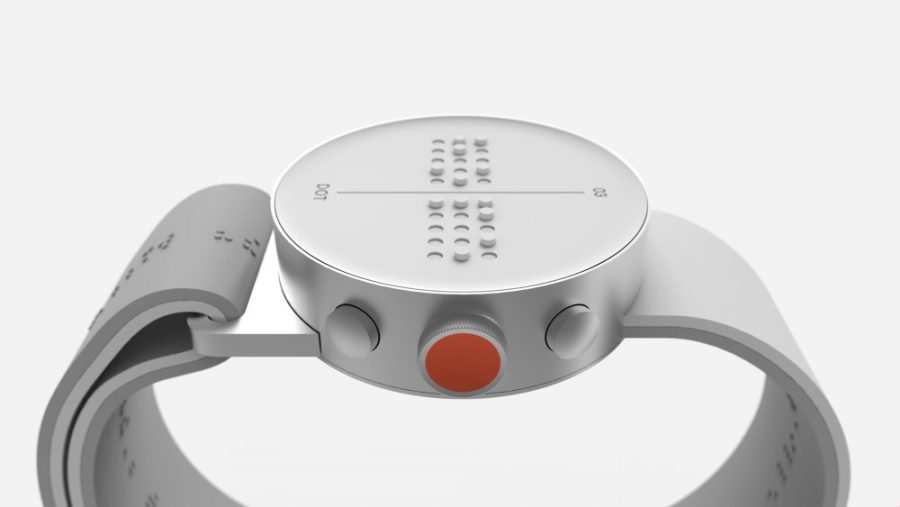The Smartwatch Meets Braille
Introducing the World’s First Braille Smartwatch
March 10, 2017
Technology is always expanding into new fields of discovery. A certain niche market is about to finally receive some attention. Over 285 million people in the world are visually impaired, and a brand new invention is hoping to change many of their lives. After years of innovation, South Korean developer Dot has finally created the world’s first Braille smartwatch.
The Dot is the product of over three years of strategic planning and creation from the company, and this year it will finally be available for shipping. In March alone, over 100,000 watches are planned to be shipped, and they will soon retail for roughly $290. The product is skillfully designed, in a pristine white box that displays information in both printed text and Braille everywhere from the box itself to the instruction manual. This itself shows the company’s consideration for the visually impaired users of the product, and provides a unique message and style.
Here’s how it works. The Dot connect through an app to a smartphone, and is able to receive text messages, social media notifications, or information from apps such as Google Maps. Then rows of dynamic Braille cells on the display move in order to display this information at a speed the reader can choose. While the watch is not in use, it will be fully functional as a normal watch, being the first Braille watch to show the time down to the seconds. In addition, a set of buttons along the side enable users to send messages in return or otherwise control their device.
A a rather touching story is behind the motivation for creating such a product. When Eric Kim, now the CEO of the company, was in college, he had a blind classmate that he managed to befriend. While doing so, he realized that while technology’s developments enabled everyone else in the class to carry around light tablets to hold all their information, his classmate was forced to lug around huge textbooks in Braille. Over time, he came to realize that technology for the visually impaired is greatly lacking, and was inspired to create something that would spur more innovation in that field.
Eric decided to create the watch for a number of reasons, but primarily in an effort to promote awareness of just how many services the visually impaired are lacking. What others consider to be normal, everyday things- flat touch screen devices to public transportation signs written primarily in written text- are things that the visually impaired suffer to employ on a daily basis. Alice Ding (9) voices what most teenagers think, saying
“I never really thought about the people who aren’t able to use technology the same way most of us do, so I think it’s great that companies are starting to help them.”
With their smartwatch, the company states that “our vision is to create a product that will stay with someone from the moment a visually impaired child enters school to span across their every birthday- essentially provide help to them for their entire lives.”





















